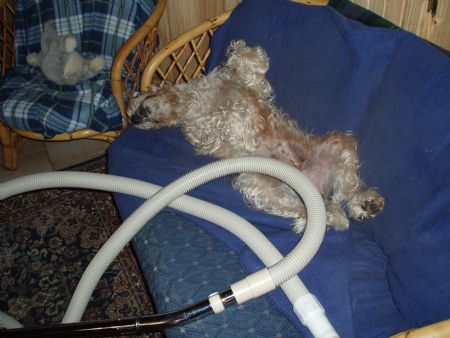FAQs

Some FAQs
Common health issues
o Compared to Boxers this is a healthy and long lived breed with an average lifespan of around 13 years, like most dogs cancer is a common killer.
o For Wheaten specific issues such as protein losing diseases (PLE & PLN) read up on these from the websites, especially those on the Links Page. Research with your own critique. Good breeding considers all aspects of health and temperament.
Compatibility with young children
o One of the aims of my breeding is to provide quality dogs to be a part of children’s lives. Wheatens are a great size for kids to learn to train and care for but adults must provide good training and guidance for the children.
Degree of exercise required
o These dogs are on average 18kg dog, 15 kg bitch. Height wise, at the shoulders these dogs will come to knee-height on a 5'4" / 163 cm woman. This means they will need a good walk, a run or serious play at least once a day
o In my experience Wheatens are not prone to neurotic behaviors but of course this means dog is well cared for and has proper time spent on it.
Trainability & suitability for indoors
o No shedding so no hair on everything
o Good at learning their manners, but like all dogs needs consistent ground rules
o Love to snuggle up and have tummy rubs
o Have natural herding instinct but in my experience not nippy like cattle dogs
o Enjoy “can do” things like agility tasks, learning tricks and being part of the family
Barking (yapping) problems
o Described as "the least terrier like of all the terriers" Wheatens are happy to settle and sleep, not go, go, go all the time but they are more than ready to go out and play or walk whenever you are.
o They bark a little more than my Boxers (almost zero) but again not like some “typical” terriers – or many of the toy breeds. to be fair my experience says dogs bark as much as you let them; so start training to discourage barking, even in games from day one. Dogs will often bark to tell you they are not happy so address all aspects barking promptly.
Grooming requirements
o A weekly brush and comb through to the skin is what is needed but doesn’t take long, the secret is to practice at table height while pup is still young even though they don’t need much grooming, more “training for grooming” at this stage.,
o Bath as you choose, dirt does fall out surprisingly well. Always use conditioner just as you would do for human hair and always comb out completely to remove knots BEFORE you wash the dog.
o Its best to keep ears, cheeks, neck and rear tidy and this keeps a neat terrier look too. This is easy to do yourself and will keep your dogs looking
o Some people clip shorter short in November and let the coat grow through to be longer in winter, a matter of personal taste. Look for grooming ideas on the Links page.
